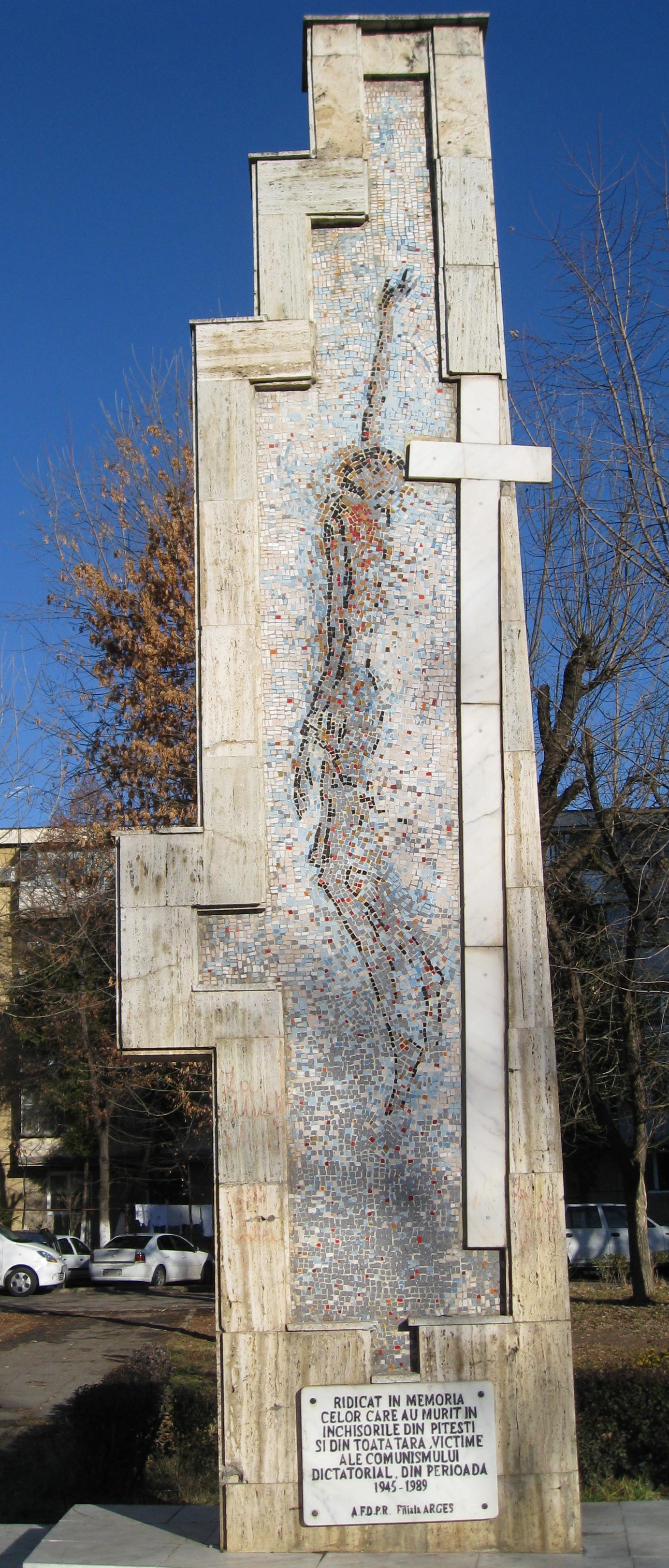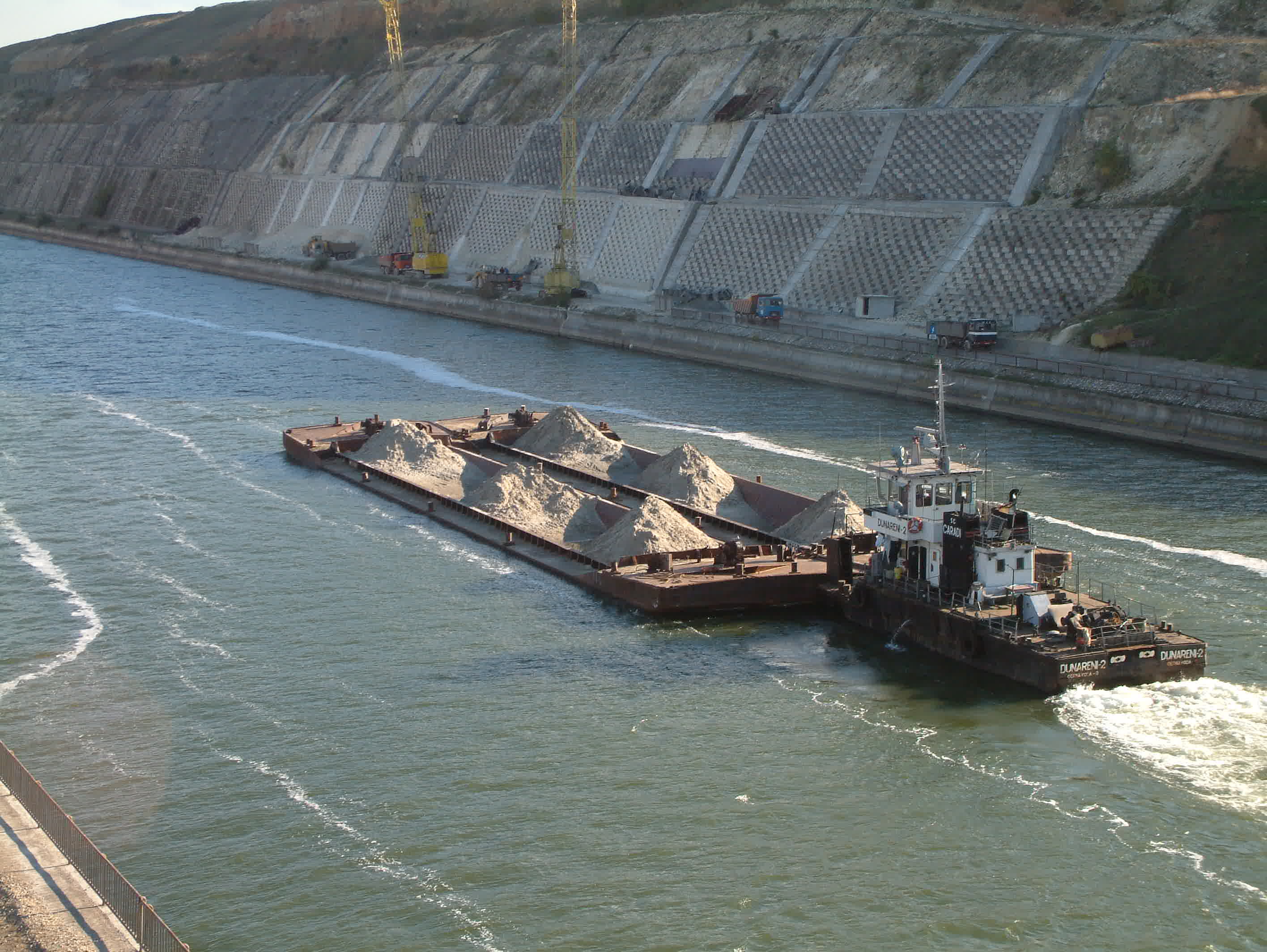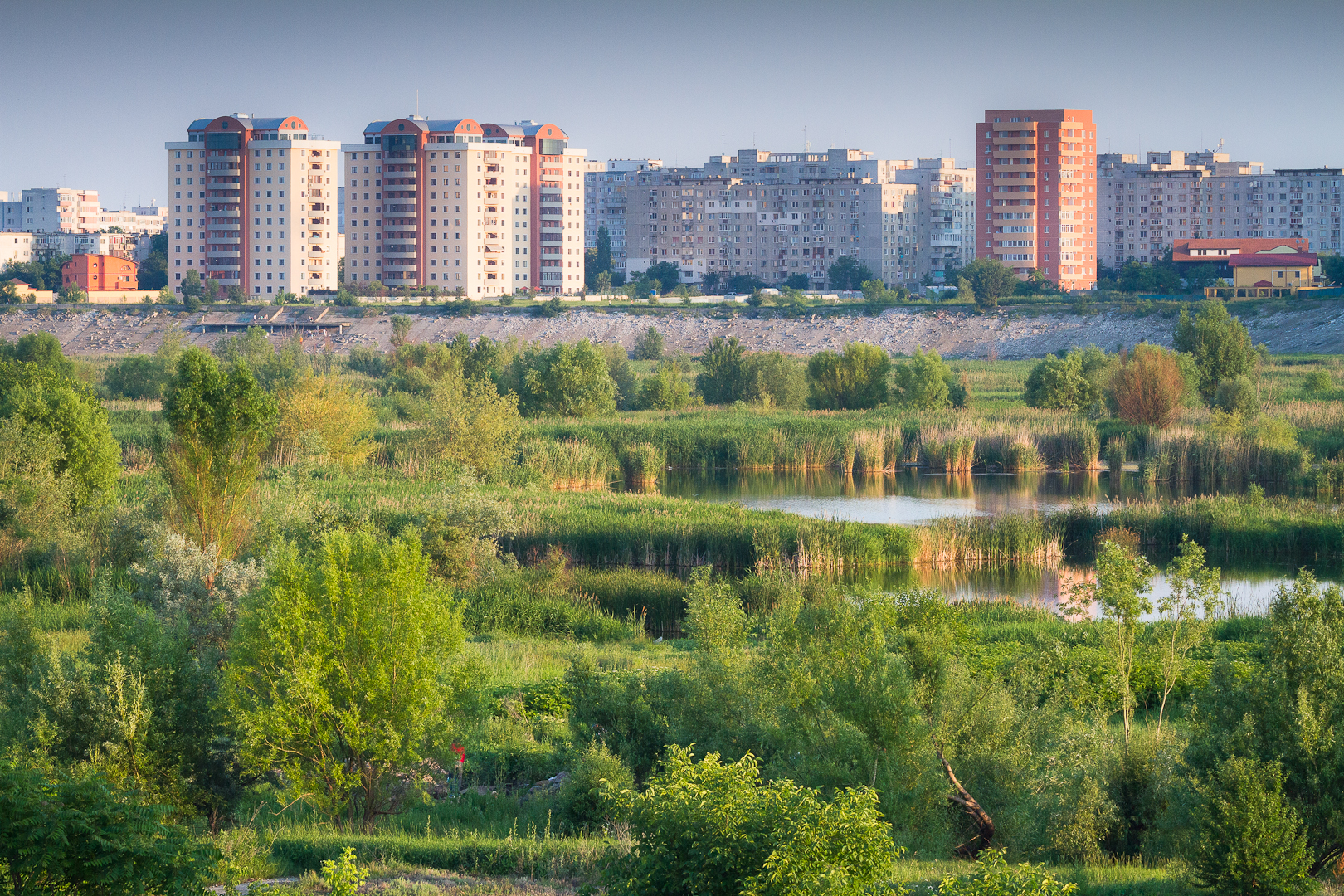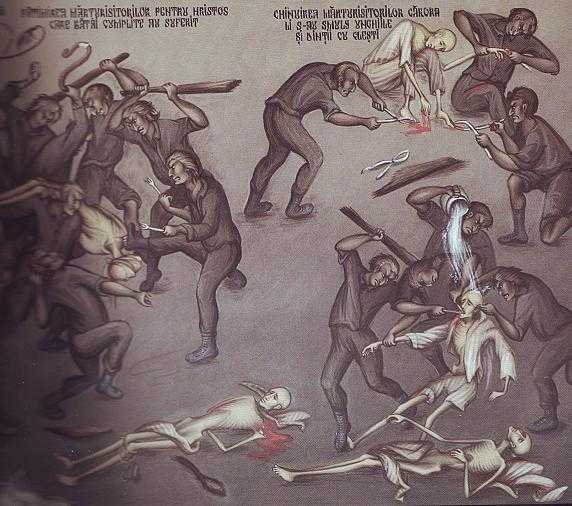|
Radu Ciuceanu
Radu Ciuceanu (16 April 1928 – 12 September 2022) was a Romanian historian and politician. A member of the National Liberal Party and later the Greater Romania Party, he served in the Chamber of Deputies from 1990 to 1992 and again from 2000 to 2004. He was born in Arad. In 1947, while a student at the Carol I High School in Craiova, he joined the anti-communist resistance group led by general Ioan Carlaonț. Ciuceanu completed high school next year and enrolled in the Faculty of Medicine, but he was arrested in September 1948 by the communist authorities. He was interrogated by the Securitate and the NKVD, and sentenced to 15 years of imprisonment with hard labor for having laid the foundations of "a subversive organization with a terrorist character" and for "purchasing weapons, ammunition and explosives, with the aim of removing the regime and to fight against the Soviet Union, through actions of sabotage and insurrection." Ciuceanu was detained at penitentiaries in C ... [...More Info...] [...Related Items...] OR: [Wikipedia] [Google] [Baidu] |
Arad, Romania
Arad (; German and Hungarian: ''Arad,'' ) is the capital city of Arad County, Transylvania. It is the third largest city in Western Romania, behind Timișoara and Oradea, and the 12th largest in Romania, with a population of 159,704. A busy transportation hub on the Mureș River and an important cultural and industrial center, Arad has hosted one of the first music conservatories in Europe, one of the earliest normal schools in Europe, and the first car factory in Hungary and present-day Romania. Today, it is the seat of a Romanian Orthodox archbishop and features a Romanian Orthodox theological seminary and two universities. The city's multicultural heritage is owed to the fact that it has been part of the Kingdom of Hungary, the Eastern Hungarian Kingdom, the Ottoman Temeşvar Eyalet, Principality of Transylvania, Austro-Hungarian Empire, and since 1920 Romania, having had significant populations of Hungarians, Germans, Jews, Serbs, Bulgarians and Czechs at various ... [...More Info...] [...Related Items...] OR: [Wikipedia] [Google] [Baidu] |
Securitate
The Securitate (, Romanian for ''security'') was the popular term for the Departamentul Securității Statului (Department of State Security), the secret police agency of the Socialist Republic of Romania. Previously, before the communist regime, Romanian secret police was called Siguranța Statului. It was founded on 30 August 1948, with help and direction from the Soviet MGB. Following the overthrow of Nicolae Ceaușescu in 1989, the new authorities assigned the various intelligence tasks of the DSS to new institutions. The Securitate was, in proportion to Romania's population, one of the largest secret police forces in the Eastern bloc. The first budget of the Securitate in 1948 stipulated a number of 4,641 positions, of which 3,549 were filled by February 1949: 64% were workers, 4% peasants, 28% clerks, 2% persons of unspecified origin, and 2% intellectuals. By 1951, the Securitate's staff had increased fivefold, while in January 1956, the Securitate had 25,468 employees. ... [...More Info...] [...Related Items...] OR: [Wikipedia] [Google] [Baidu] |
Alexandru Nicolschi
Alexandru Nicolschi (born Boris Grünberg, his chosen surname was often rendered as Nikolski or Nicolski; russian: Александр Серге́евич Никольский, ; June 2, 1915 – April 16, 1992) was a Romanian communist activist, Soviet agent and officer, and Securitate chief under the Communist regime. Active until 1961, he was one of the most recognizable leaders of violent political repression. Biography Early life Born to a Jewish family in Tiraspol, on the eastern bank of the Dniester river (part of Imperial Russia at the time), he was the son of Alexandru Grünberg, a miller. In 1932, he joined the local section of the Romanian Union of Communist Youth, a wing of the Romanian Communist Party (PCdR); in 1933, due to his political activities, he was arrested and held for two weeks by the Romanian secret police, Siguranța Statului.Deletant, p. 19 Later in the 1930s, as associates of General Secretary Vitali Holostenco, he and Vasile Luca were elected to th ... [...More Info...] [...Related Items...] OR: [Wikipedia] [Google] [Baidu] |
Re-education In Communist Romania
Re-education in Romanian communist prisons was a series of processes initiated after the establishment of the communist regime at the end of World War II that targeted people who were considered hostile to the Romanian Communist Party, primarily members of the fascist Iron Guard, as well as other political prisoners, both from established prisons and from labor camps. The purpose of the process was the indoctrination of the hostile elements with the Marxist–Leninist ideology, that would lead to the crushing of any active or passive resistance movement. Reeducation was either non-violent – e.g., via communist propaganda – or violent, as it was done at the Pitești and Gherla prisons. Theoretical background Philosopher Mircea Stănescu claimed that the theoretical foundation for the communist version of the reeducation process was provided by the principles defined by Anton Semioniovici Makarenko, a Russian educator born in Ukraine in 1888. This claim was disputed by histori ... [...More Info...] [...Related Items...] OR: [Wikipedia] [Google] [Baidu] |
Eugen Țurcanu
Eugen Țurcanu (8 July 1925 – 17 December 1954) was a Romanian criminal who led a group that terrorized their fellow inmates during the late 1940's at Pitești Prison in Pitești, Romania. In a well publicized trial, Turcanu and fifteen of his accomplices were convicted in the deaths of several inmates and executed. As a young man, Turcanu was a local communist official studying for a career in diplomacy. However, in 1948, he went on trial for his involvement with the Iron Guard of the previous regime and was sentenced to seven years in prison. With the tacit approval of the prison administration, Turcanu formed a group of inmates to obtain information and police the ideological beliefs of the prison population, using torture and deadly force when necessary. When his activities became public knowledge in the West, Romanian authorities put Țurcanu on trial in 1954. Biography Early life and Iron Guard Țurcanu was born either in Păltiniș, Dârmoxa (today part of Bro� ... [...More Info...] [...Related Items...] OR: [Wikipedia] [Google] [Baidu] |
Danube–Black Sea Canal
The Danube–Black Sea Canal ( ro, Canalul Dunăre–Marea Neagră) is a navigable canal in Romania, which runs from Cernavodă on the Danube river, via two branches, to Constanța and Năvodari on the Black Sea. Administered from Agigea, it is an important part of the waterway link between the North Sea and the Black Sea via the Rhine–Main–Danube Canal. The main branch of the canal, with a length of , which connects the Port of Cernavodă with the Port of Constanța, was built in 1976–1984, while the northern branch, known as the Poarta Albă–Midia Năvodari Canal, with a length of , connecting Poarta Albă and the Port of Midia, was built between 1983 and 1987. Although the idea of building a navigable canal between the Danube and the Black Sea is old, the first concrete attempt was made between 1949 and 1953, when the communist authorities of the time used this opportunity to eliminate political opponents, so the canal became notorious as the site of labor camps, w ... [...More Info...] [...Related Items...] OR: [Wikipedia] [Google] [Baidu] |
Poarta Albă
Poarta Albă (literally in en, White Gate) is a commune in Constanța County, Northern Dobruja, Romania. The commune is a port on the Danube–Black Sea Canal. Villages The following villages are included in the Poarta Albă commune: * Poarta Albă (historical name: ''Alakap'', tr, Alakapı) * Nazarcea (historical name: ''Galeșu'' between 1930 and 1964, tr, Nazarça) History In the early 1950s, a prison camp operated at Poarta Albă, part of a chain of forced labour camps set up along the length of the Canal by the communist authorities. Some 12,000 prisoners were held at the Poarta Albă camp. Many perished due to the harsh working conditions. According to a study done by the International Centre for Studies into Communism, 12.7% of all political prisoners in Communist Romania did some time at Poarta Albă. Among the political prisoners who did time at the Poarta Albă labor camp were Alexandru Claudian, Vladimir Constantinescu, Gherman Pântea, and Ovidiu Papadima. Demog ... [...More Info...] [...Related Items...] OR: [Wikipedia] [Google] [Baidu] |
Văcărești, Bucharest
Văcărești () is a neighbourhood in south-eastern Bucharest, located near Dâmbovița River and the Văcărești Lake. Nearby neighbourhoods include Vitan, Olteniței, and Berceni. Originally a village, it was incorporated into Bucharest as it expanded. Its name is related to the Wallachian aristocratic Văcărescu family, with an etymology leading back to the Romanian , "cow-herder," and the suffix '' -ești''. The Monastery and quarter The Văcărești Monastery, built by Nicholas Mavrocordatos in 1716, was located on the Văcărești hill, nowadays near Piața Sudului. It was demolished in 1984 during the regime of Nicolae Ceaușescu to make room for a Palace of Justice that was never built. It was the largest 18th-century monastery in Southeastern Europe and it had a church in the style of Curtea de Argeș Cathedral. It was also designed to be used as a fortress, and was seized in May 1771 by the Imperial Russian army, under commander Nikolai Vasilyeich Repnin, in t ... [...More Info...] [...Related Items...] OR: [Wikipedia] [Google] [Baidu] |
Aiud Prison
Aiud Prison is a prison complex in Aiud, Alba County, located in central Transylvania, Romania. It is infamous for the treatment of its political inmates, especially during World War II under the rule of Ion Antonescu, and later under the Communist regime. History Early days The first mention of the structure dates from 1786. From 1839 to 1849 it served as prison next to the Aiud court of law. After being devastated by fire in January 1849, a new prison was built in 1857, and completed in 1860. An isolation unit, named Zarca (from the Hungarian zárka, meaning solitary), was added in 1881–1882. Finally, between 1889–1892, a T-shaped unit with 312 individual cells was erected. The interwar and World War II During the period 1926–1943, some 143 Communist activists were imprisoned at Aiud peninteciary. Moreover, after the defeat of the Legionnaires' rebellion in 1941, Iron Guard members were also detained there. The largest number of political prisoners held at Aiud durin ... [...More Info...] [...Related Items...] OR: [Wikipedia] [Google] [Baidu] |
Gherla Prison
Gherla Prison is a penitentiary located in the Romanian city of Gherla, in Cluj County. The prison dates from 1785; it is infamous for the treatment of its political inmates, especially during the Communist regime. In Romanian slang the generic word for a prison is "gherlǎ", after the institution. History Early years The basic structure came from the fortress of Gherla or "Szamos-uj-var" (equivalent to transliteration from Hungarian, meaning "New castle on the Szamos") built around 1540 by George Martinuzzi, archbishop, cardinal and Imperial Treasurer of the Habsburg Empire. Through the Imperial Decree of Joseph II, Holy Roman Emperor, dated October 20, 1785 this fortress was transformed into "Carcer Magni Principatus Transilvanie" (The Major Prison of Transylvanian Principality). Throughout its history under the Austrian Empire, then Austro-Hungarian Empire, Hungary and finally Romania the penitentiary also hosted various industrial activities. Near the prison a large cem ... [...More Info...] [...Related Items...] OR: [Wikipedia] [Google] [Baidu] |
Pitești Prison
Pitești Prison ( ro, Închisoarea Pitești) was a penal facility in Pitești, Romania, best remembered for the reeducation experiment (also known as ''Experimentul Pitești'' – the "Pitești Experiment" or ''Fenomenul Pitești'' – the "Pitești Phenomenon") which was carried out between December 1949 and September 1951, during Communist party rule. The experiment, which was implemented by a group of prisoners under the guidance of the prison administration, was designed as an attempt to violently "reeducate" the mostly young political prisoners, who were primarily supporters of the fascist Iron Guard, as well as Zionist members of the Romanian Jewish community. The Romanian People's Republic adhered to a doctrine of state atheism and the inmates who were held at Pitești Prison included religious believers, such as Christian seminarians. According to writer , the experiment's goal was to re-educate prisoners to discard past religious convictions and ideology, and, eventual ... [...More Info...] [...Related Items...] OR: [Wikipedia] [Google] [Baidu] |
Târgșor
Târgșor is a former medieval market town in what is now Prahova County, Romania. The town peaked around 1600, after which it declined to become the village of Târgșoru Vechi, located about southwest of Ploiești. History Built in a heavily forested area, Târgșor developed thanks to the local fair and its auspicious location at a crossroad of several trade routes.Rădvan, p. 303 These roads included Drumul Brăilei, which linked Târgoviște to the Danube port of Brăila, as well as the roads which linked Târgșor to Brașov and Bucharest. Târgșor gets its name from the diminutive of ''târg'' (market, fair) and can be related to the name of Târgoviște, which was the capital of Wallachia and a much bigger city. The settlement transformed into a town sometimes between 1368 and 1412, during the rule of Mircea I. The first document mentioning his name was a September 1412 document by Voivode of Transylvania Stibor of Stiboricz, who granted the people of Brașov the "p ... [...More Info...] [...Related Items...] OR: [Wikipedia] [Google] [Baidu] |

.png)






